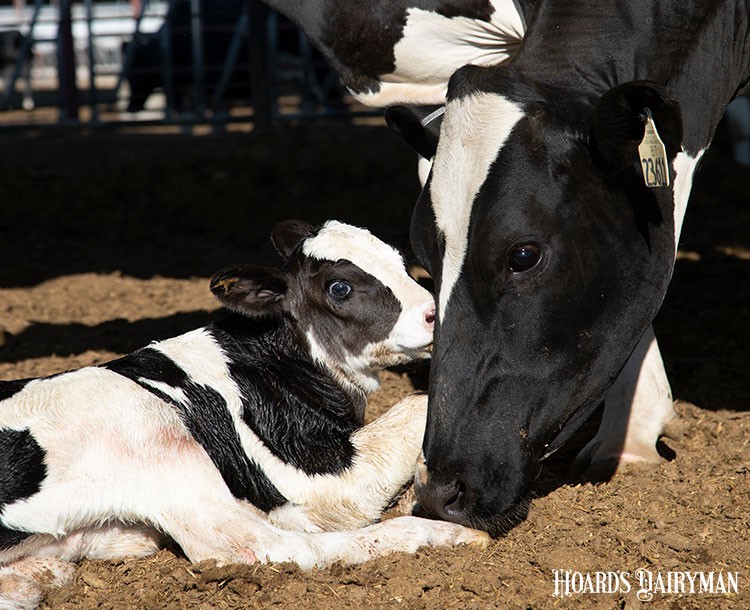Pathogen problems start in the maternity pen by Abby Bauer Hoards Dairyman
Pathogen problems start in the maternity pen
by Abby Bauer Hoards Dairyman
Once a calf is born, it faces many chances for pathogen exposure. From colostrum collection to feeding equipment and calf housing to older calves, many aspects of a farm contribute to a calf's pathogen load.
During her presentation at the American Association of Bovine Practitioner's (AABP) annual meeting, veterinarian Terri Ollivett placed her focus on the maternity pen and its role in calfhood respiratory diseases, such as pneumonia.
"It's really easy to overlook problems going on in maternity when dealing with pneumonia at 3 to 5 weeks of age," said Ollivett, an assistant professor at the University of Wisconsin-Madison School of Veterinary Medicine. But oftentimes, early life experiences contribute to calf health down the road.
The issue with maternity pens is density — both spatial density and temporal density.
When it comes to spatial density, Ollivett said that is a fancy way of saying a facility is overcrowded. The goal is to provide 150 square feet of resting space and 30 inches of bunk space per cow. When facilities are crowded, she explained that it is harder to see when cows are calving and it is more difficult to find a calf when it is born without walking through the pen and disrupting all the cows.
Calves that aren't found soon after birth are at higher risk for pathogen exposure in the pen, delayed colostrum feeding, failure of passive transfer, scours, and pneumonia. "More cows in the pen means more bugs for the calves to wear and share," Ollivett reiterated.
Temporal density, on the other hand, could mean plenty of space per cow but too many cows coming through the system. The result is multiple births between pen cleanings and more pathogen exposure for calves.
Ollivett shared an example of a dairy that had 12 calving pens. Rather than utilizing all the pens, the maternity staff had decided to use the four closest pens to improve labor efficiencies. However, the result was more calvings per pen without proper sanitation.
"Make sure to use all of the available space," Ollivett recommended. For this particular farm, they were able to solve a lot of their early calfhood health issues by simply numbering and using all of the maternity pens, allowing for time in between births to clean and disinfect those spaces.

Photo credit: Hoards Dairyman
Upcoming Events
WEBINAR - Automated Milking Systems Efficiency: Balancing Focus on Individual Cows and System Optimization
May 8, 2024
Please join Cornell the SWNY team and MSU Extension for our talk with Dr. Pablo Silva Boloña on improving efficiency of Automated milking systems by focusing on milking settings for individual and group success.
Broiler Field Day at Sunny Cove Farm
June 6, 2024
Alfred Station, NY
Join us for a field day to explore broiler production, processing, and finances. Meghan Snyder of Sunny Cove Farm will be our host. She raises small batches of organic broilers, processing them on-farm under the 1,000 bird exemption.
Cornell Seed Growers Field Day
July 2, 2024
Ithaca, NY
Please Save the Date for the Cornell Seed Growers Field Day to be held the morning of July 2nd. The event will be held at the NYSIP Foundation Seed Barn, 791 Dryden Rd., Rt. 366, Ithaca, NY.
Announcements
No announcements at this time.





